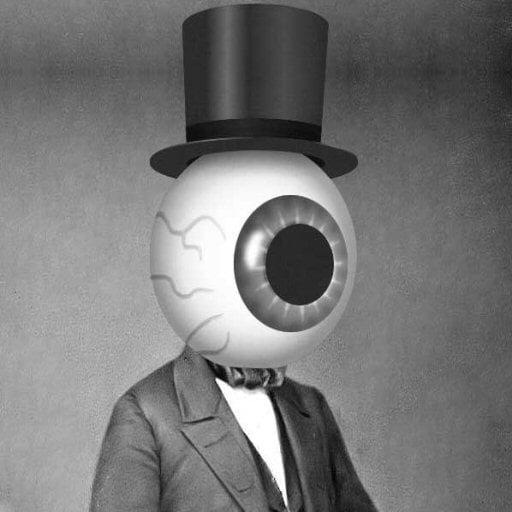I finally had an area to setup the resin printer i got almost a year ago. Did initial setup, bed leveling, and set out to test with this benchmark I’ve seen around.
It’s an elegoo saturn 2 printer, I’m using CHITUBOX basic as the slicer, all settings were the default it gave for this printer other than adding 0.5 wait time to before lift (default 0) , and bottom layer count to 8 (default 5)
I used the elegoo washing station for 10min then the curing station for 10min. There seem to be a lot of rough lines and the right side line ramp is barely visible at all. Not sure what this suggests needs adjustment and would appreciate some help getting into the correct direction.
I did do some looking around and at least it seems i should try 4 base layers only on this according to one of the places i found it hosted. Other than that I’m not sure how to clean it up more
I see a lot of inconsistent exposure, which is super weird.
How old is the resin? New? Was it purchased at the time you got the printer? Was it well shaken? One particular resin I have will separate hard and basically needs a blender to get broken up again to be capable of printing.
The biggest issue I see is the gap in the outline at the very top of the print. That shouldn’t happen that late in the print at all. It’s iffy resin or there are small solid chunks floating around in your tank.
My first week with my resin printer was spent testing exposure and probably did about a hundred or so “cones of calibration” ( https://www.tableflipfoundry.com/3d-printing/the-cones-of-calibration-v3/ ) with a few different resins.
While a person generally needs to be a little on the crazy side to do that much testing, it was effective. After all of the that testing, what I found out is that comparing two prints with different settings is more valuable than just printing one single calibration test.
See if you can manage to print at least 8 tests at 8 different exposure levels. (I prefer 16, but you do you.) You will quickly learn how to interpret calibration tests and how exposure works.
But, back to your question and my official interpretation: You have a printer that is capable of printing! Yay! I ain’t being sarcastic and this is good. You do need some comparison prints though…
The resin was from when I bought the printer. was shaken, and poured in with the included filter funnel, it didn’t seem to be having any issues mixing, tho it is an “abs like” white resin so maybe i need higher exposure time? I’ll check the elegoo site it’s one of their resins i know some of them have setting recommendations.
Thanks for the link I’ll give cone of calibration a try and see where i can get with that
Resins have a typical use-time for within a year. Some may last longer, some may not. Some may start to show exposure issues. Some just start to separate or solidify partially. Some resins don’t care at all. (It should be written somewhere on the bottle when the resin was made and when it should be used by.)
This is a helluva “unknown variable” you are working with, is my point. Resin is the absolute core of any printing functionality (obviously) and print settings are highly dependant on the resins qualities.
Just because I am so damn picky during my testing and learning process, I would abandon testing with that resin completely and be thankful it even printed a calibration test at all. (I would get a fresh bottle, is what I am saying.)
However, in the interest of using the resin, I would YOLO the exposure time (increase it) and start printing prototypes or other strange experiments. There is a bunch of things I could test even if using a sub-optimal resin.
You could spend time with the rest of that bottle and tweak the settings into partial-perfection. How reusable are those settings for future bottles though?
That’s a fair point, the date on the bottle says it should be good for another year apparently but it wouldn’t hurt to get a fresh bottle just to be safe. It does look like I would need to fuck with the exposure time regardless since it’s a bright white resin it appears to need longer exposure. I also have a clear resin which apparently needs even more exposure.
At the very least I know I have good build plate adhesion because God damn some of these have been difficult to get off I actually slightly scratched my build plate in one spot a little bit getting some of them off I need to be more careful and use the plastic spatula not the metal one
You probably just need to shake the shit out of it. Shake it until you’re too tired, then shake it a lot more.
Second this.
Color and age definitely matter too. Each resin should also have a configuration table you can import into the slicer. I use Sirya and they offer data sheets and configs from their website. Not sure which other resin manufacturers do the same
I’ll poke around, it’s an elegoo resin and if I’m not mistaken they at least offer some recommended setting changes somewhere on the website for their resins
Adding to the cones recommendation that UV Tools has a function to let you run multiple exposure tests on the same plate.
What is your retraction distance? It almost looks like it’s not leaving the bed enough to allow the resin to flow. I might be wrong, it’s been a while since I messed with mine, but I had issues during setup with it not retracting enough. Maybe add some distance and slow that part down a tad
I used the default provided, but that’s a good guess I’ll give it a little extra distance and maybe add a little extra wait time after retraction to see if that helps



